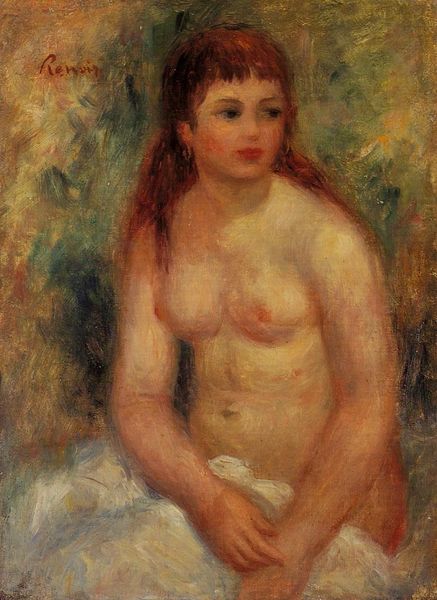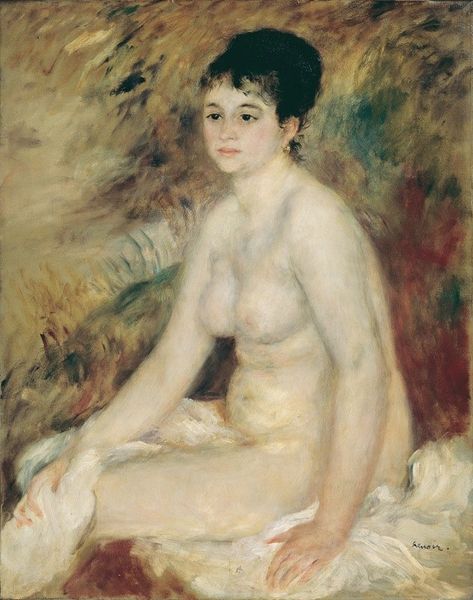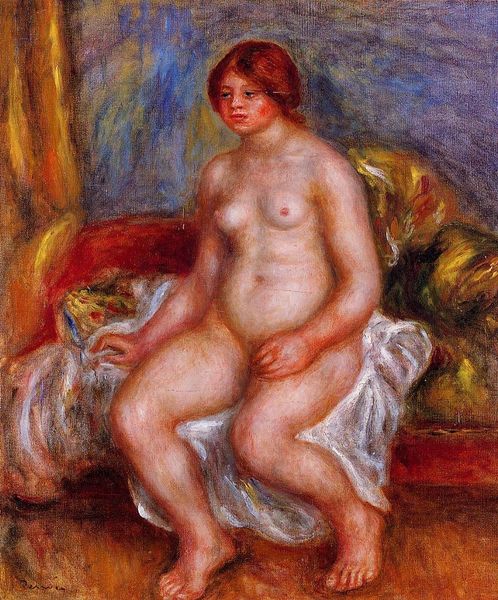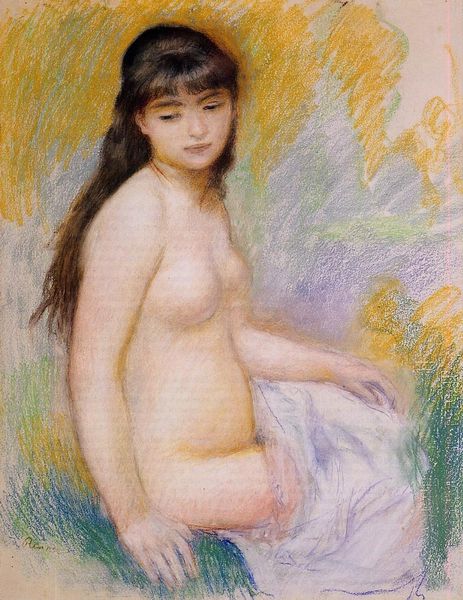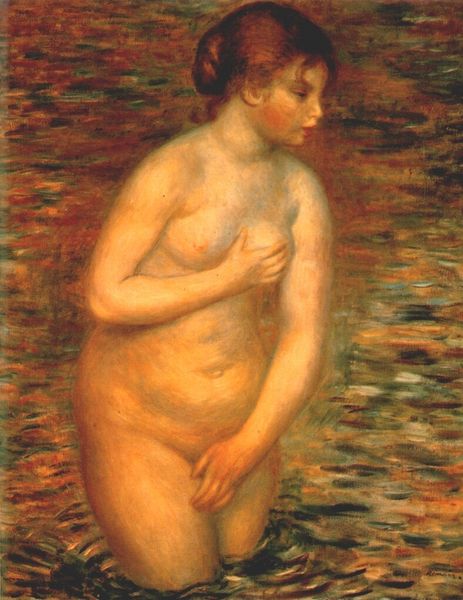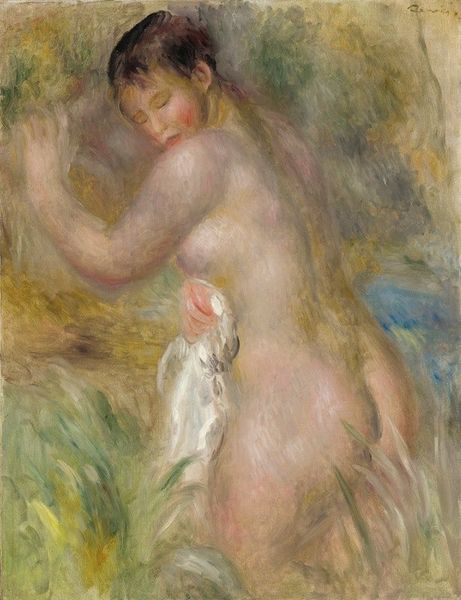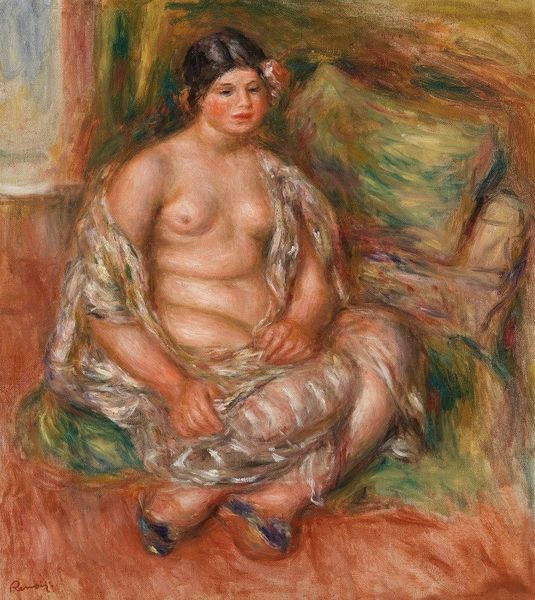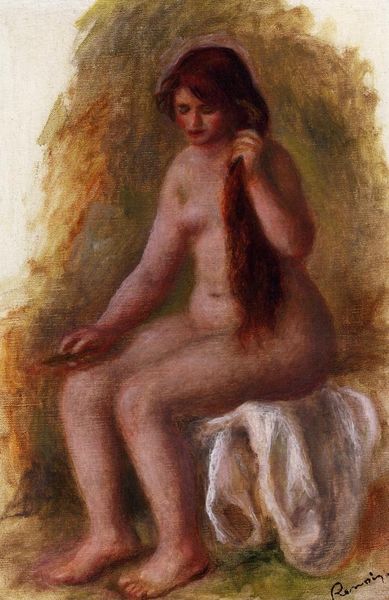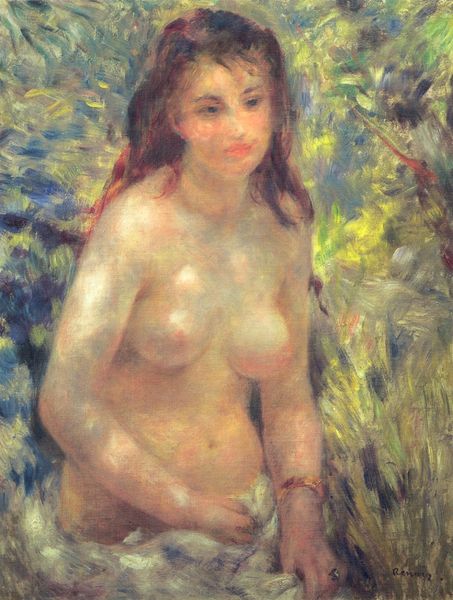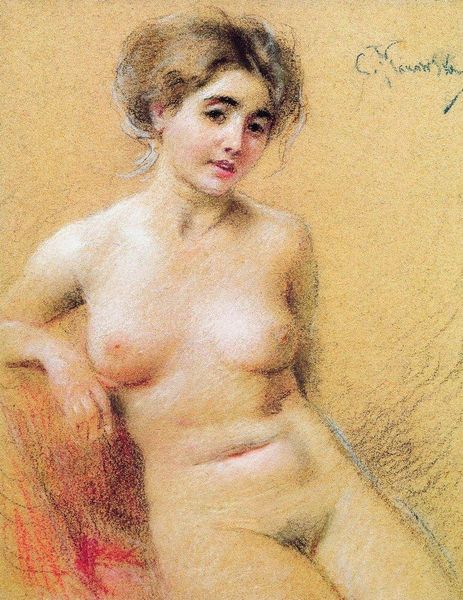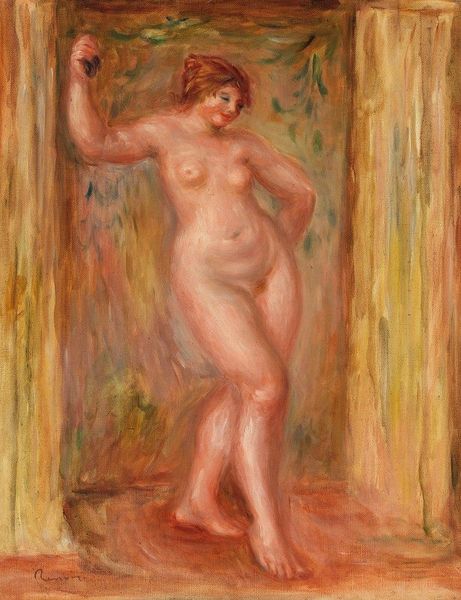
Copyright: Public domain
Curator: Looking at Renoir’s “Nude,” created around 1880 using oil paints, I’m immediately struck by the intimate depiction and the romantic sensibility. What’s your first impression? Editor: I notice the layers of color in her skin tones. You can really see the artist manipulating the oil paint to create such soft, almost blurry forms. The raw pigment and its application speak to the means of production here. Curator: Absolutely. It is representative of Renoir's engagement with Impressionism, though with an undeniable pull towards Romanticism in the pose and the subject's almost dreamy gaze. But tell me, what can we unpack when considering the materials employed, that very process of painting, in relation to this intimate study? Editor: It feels that Renoir relishes the texture of the oil, doesn't shy away from the tactile quality of the material. Given his impressionist peers, it seems he focuses as much on that interaction with his tools and the canvas, not solely on conveying some optical truth about the subject in a natural setting as promoted by his fellow Impressionists, but conveying his perception of it. Curator: That’s fascinating because Renoir, along with other Impressionists, was pushing against academic norms and traditional artistic establishments. The looseness of the brushwork, the visible layering of pigment; it’s a conscious choice, and a statement really about the changing function of art, right? Away from just historical representation, and closer to personal experience and observation. Editor: Precisely. And when you look closely at the surface, you see so much labor. Not just labor in the traditional artistic sense, but of working a surface and exploring how far paint can be manipulated to construct a kind of...feeling. A feeling that transcends the woman he depicts. It’s really about material investigation in service of depicting this idea of intimacy and naturalness. Curator: An intriguing interpretation. Seeing “Nude” within Renoir's career, it clearly stands as an artwork pushing at the boundaries of academic tradition in late 19th century France, moving towards portraying subjective beauty. Editor: I find myself looking beyond conventional notions of ‘beauty’, and considering the actual labor and means used to manifest it. Curator: I find that consideration of materials enhances my understanding of what he intended this kind of imagery to do, within a wider field of visual art production in France at that time. Editor: Exactly. The materiality gives me a deeper understanding of the moment, capturing that time for labor practices too.
Comments
No comments
Be the first to comment and join the conversation on the ultimate creative platform.
